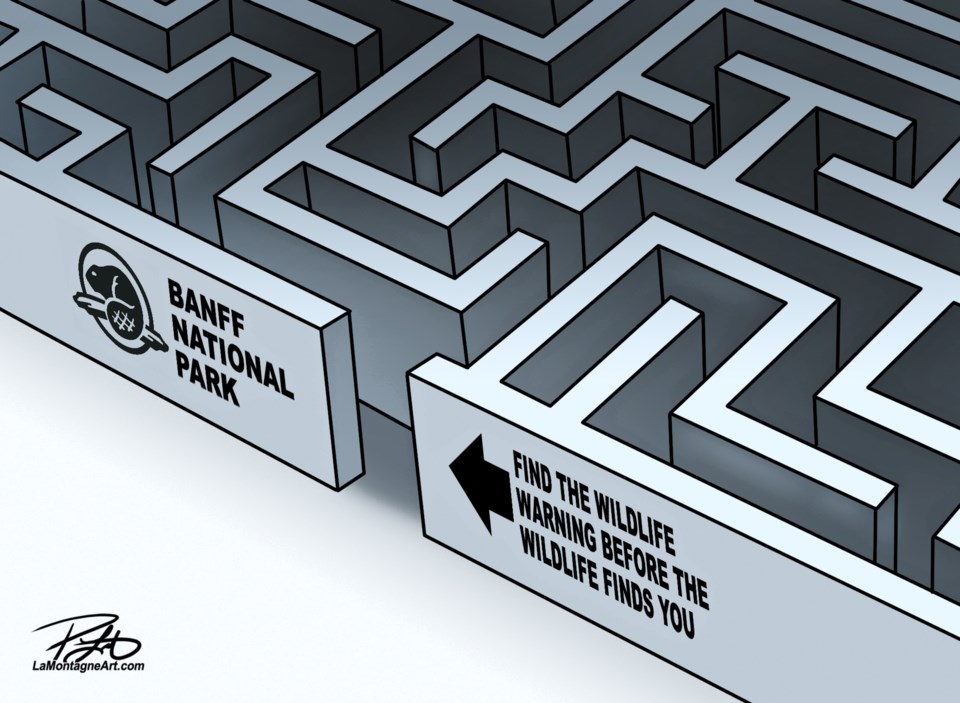A core mandate of any public institution is to be open and transparent with information, but also have public safety be a main priority.
When two people were tragically killed by an under-nourished 25-year-old female grizzly bear in a remote area of Banff National Park Sept. 29, Parks Canada failed to provide anything but two emailed statements rather than allowing human-wildlife expert staff to speak.
A week later when bear No. 122 – also known as The Boss – was seen eating a mule deer carcass near the Fenlands Banff Recreation Centre, it was up to the Town of Banff to largely address public safety messaging to keep people away from the world-renowned bear. Parks Canada was once again silent.
Though Parks Canada has undoubtedly some of the most knowledgeable wildlife experts in the country, a choice by leadership to not let them speak about ongoing issues that could lead to better choices in preventing human-wildlife conflict is negligence.
Tweets, Facebook posts and putting up warning signs are all key for messaging, but they ultimately lack in ensuring the federal agency’s messaging of human-wildlife co-existence is fully relayed.
At a time when black bears and grizzly bears are in the final weeks of fattening up and looking for any source of food – potentially further increasing the possibility of human-wildlife conflict – it’s inexcusable for the lack of information coming from Parks Canada’s Banff field unit.
As Parks Canada in Banff National Park has failed to successfully provide messaging and information to ensure public safety, it has fallen on the shoulders of nearby municipalities.
Prime Minister Justin Trudeau told the public in 2015 after coming to power that experts and scientists would be free to speak on research and important topics. The messaging coming out of Ottawa was proudly “government and its information must be open by default.”
However, the trend in the Banff field unit would make the Stephen Harper years proud in ushering in an era of secrecy in one of the most sought-after places for people to visit.
An inability to make experts available when public safety is and should be a priority is only adding to the danger of further human-wildlife conflict. When Parks Canada is silent, people look to fill the void in information elsewhere and have other organizations or individuals speaking for them. That was the case when two people were killed by a grizzly bear in a remote region of the park earlier this month, leading to constant speculation as the federal agency refused to answer any questions.
The Town of Banff has had to take the lead where a lack of leadership in Banff field unit has risen, especially in the last year-and-a-half.
Both Banff and Canmore have been aggressive in promoting funding programs to have residents remove fruit trees, while municipal enforcement officers have equally worked hard to educate and remove the possibility of further human-wildlife conflict.
In an area such as Banff National Park where elk are in rutting season, black bears and grizzly bears are looking for sources of food before hibernating and other wildlife from bighorn sheep, cougars, coyotes, wolves, mountain goats and the occasional moose can be seen, accurate and timely information coming from experts is vital.
On the ground, there’s little doubt about the hardworking nature of Parks Canada's resource conservation officers.
While it’s tempting to try to micromanage or avoid a message or answer media questions, anyone attempting to do so has already failed if the goal is perception over safety and transparency.




